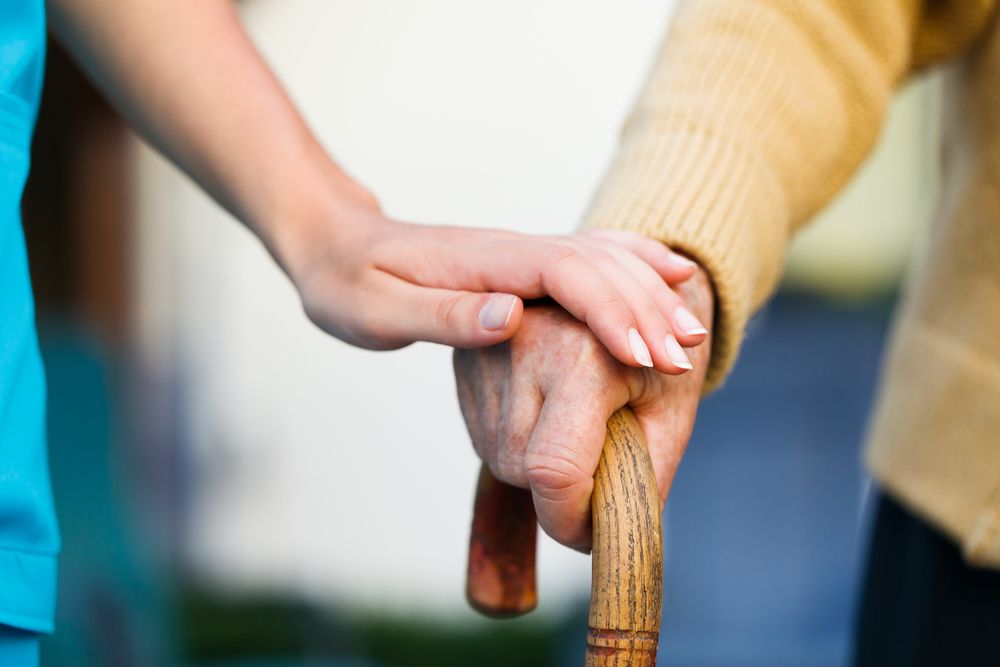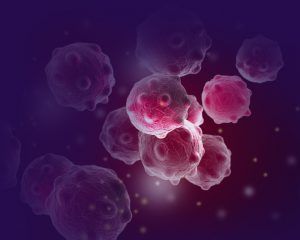Age-Related Illnesses & Treatment Options
For a variety of reasons, from telomere attrition to epigenetics, our bodies and minds can become less agile over time. This can increase our risk for many diseases and ailments, including Alzheimer’s disease, arthritis, cancer, and bone loss. (Learn More — Aging and Your Health) Alzheimer’s disease is the most common cause of dementia and results in a continuous decline of cognition, social skills, and behavior. Alzheimer’s is associated in part with age, and is much more common as people grow older. While it has no cure, it can be slowed and the affected individual can remain independent for longer with a combination of medication, proper caregiving, and lifestyle changes. (Learn More — Alzheimer’s Disease) Arthritis is a painful condition that can limit mobility. It is caused by swelling and inflammation in one or more joints. Osteoarthritis, the most common form of arthritis, occurs when protective joint cartilage is worn down. This ailment can’t be fully repaired, but medication and surgery can reduce pain and improve your quality of life. (Learn More — Arthritis) Cancer can take on many forms. As the body becomes weaker with age, our risk of cancer increases. Specific symptoms vary depending on where the cancer forms in the body. Cancer can be treated with surgery, chemotherapy, radiation therapy, immunotherapy, hormone therapy, targeted drug therapy, and more (usually in some combination). Catching cancer early and starting treatment immediately will yield the best possible prognosis. (Learn More — Cancer) As people get older, their bones weaken due to a loss of calcium and other minerals, causing them to lose density and mass. Diet and exercise can help mitigate this deterioration. Dairy is high in calcium and fortified with vitamin D — two of the most important minerals for bone health. If you can’t exercise or eat dairy, talk to your doctor. There are alternative movements and other foods that can help. (Learn More — Bone Loss)
Aging and Your Health
Age is one of the most inevitable factors in declining health. As we age, our bodies become less agile, and our internal systems reach certain limits. The exact mechanics of why aging affects the body are influenced by telomere attrition and epigenetics, in addition to the inevitable wear and tear that comes along with living a long, active life. Age is a big risk factor for a number of diseases and conditions, many of which are chronic:
Alzheimer’s disease
Arthritis
Cancer
Bone loss
This list is not exhaustive, though; age is a risk factor in a very long list of illnesses. But these are especially worth discussing due to how frequently they affect the elderly.
Alzheimer’s Disease
Alzheimer’s disease is the most common cause of dementia, causing the sufferer to experience a continuous decline in cognition, social skills, and behavior. This happens because the disease causes brain cells to degenerate and die. The process can be slowed, but there is no cure. The disease is eventually fatal.

While it is not the only risk factor, age plays a big part in Alzheimer’s disease. One study found a striking difference in the rate of Alzheimer’s among different age groups.
For every 1,000 people, there were two new diagnoses annually for people between 65 and 74 years old.
This rose to 11 new diagnoses for every 1,000 people between ages 75 and 84.
Finally, there were 37 new cases for every 1,000 people age 85 and over.
While other factors are also at play (including the fact that as we get older, our lifestyles also tend to slow down), it is clear that age plays a big role in most people’s risk of developing the disease. Even though Alzheimer’s disease is progressive and eventually fatal, a combination of lifestyle changes, caregiving, and medication can help improve a patient’s life and extend how long they are able to function independently. Two commonly prescribed medications to treat Alzheimer’s are cholinesterase inhibitors (Aricept, Razadyne) and memantine (Namenda). However, these drugs don’t work for everyone. They tend to have a subtle effect, but they have been shown to slow memory loss. Alzheimer’s disease can be a difficult experience for both the patient and their caregivers. Be sure to research the illness thoroughly and talk directly to professionals if you are diagnosed, so you can receive the best care and make the experience as easy as possible for everyone involved.
Arthritis
As we get older, the chances of developing arthritis increase. Arthritis is characterized by the swelling of one or more joints, causing tenderness, pain, stiffness, a reduced range of motion, and potentially visible redness. While there are several types of arthritis, the most common is osteoarthritis, which occurs when the protective cartilage that cushions the ends of your bones gets worn down. The longer your joints are in use, the more likely they are to exhibit wear and tear. Osteoarthritis cannot be reversed, as the damage is generally irreparable, but symptoms can be managed. This can be achieved with a combination of surgery, physical therapy, and medication, as recommended by your doctor. It is also likely that lifestyle changes will be suggested. Medications that can help with osteoarthritis (and can be useful for other types of arthritis) include:
Acetaminophen (Tylenol).
Widely available over the counter (OTC), acetaminophen can reduce swelling and treat mild to moderate pain. If you have liver problems, talk to your doctor before taking acetaminophen. If the recommended dose doesn’t help alleviate your pain and swelling, let your doctor know.
Nonsteroidal anti-inflammatory drugs (Advil, Aleve): Available OTC, nonsteroidal anti-inflammatory drugs (NSAIDs) typically relieve osteoarthritis symptoms when taken as recommended. Prescription drugs are available for those with more severe symptoms.
These drugs can cause cardiovascular problems, bleeding problems, stomach problems, liver damage, and kidney damage. Gels are typically the preferred format, as they have fewer side effects but provide similar levels of pain relief.
Cancer
There are a variety of types of cancer, each with their own set of symptoms and stages. These stages indicate the best course of treatment moving forward, but the suggested treatment can also vary based on individual health and personal needs.

As you age, the ability for your body to repair itself, copy cells, and catch errors worsens. Unfortunately, this can make it easier for cancer to form. The cancer symptoms you experience will vary depending on the affected location and stage of the illness. Generally speaking, more advanced stages of cancer yield more severe symptoms and a worse prognosis. Catching cancer early is best, and you should always see a doctor if you have any reason to suspect you may have cancer. Waiting too long can sometimes lead to very dangerous and potentially fatal outcomes, especially if your cancer manages to spread to multiple parts of your body. The proper treatment for cancer will likely include some combination of surgery, chemotherapy, radiation therapy, immunotherapy, hormone therapy, and targeted drug therapy. You may participate in clinical trials, which use drugs that are not already approved to treat your condition. A patient will sometimes be given a bone marrow transplant. This can help you tolerate higher doses of chemotherapy and/or potentially replace diseased marrow.
Bone Loss
As you age, your bones will lose calcium and other minerals, decreasing their mass and density. This makes them more fragile. Bone loss is a primary reason why the elderly are more at risk of serious outcomes from falls and other incidents that would be minor for younger people. This problem can be especially bad for those going through – or who have already gone through – menopause, as well as people who have medical conditions that limit their mobility. People who experience bone loss should talk to their doctors about diet and exercise. Even if your mobility is limited, there may be some exercises you can do to improve your situation; exercise is linked to higher bone mass and stronger bones. High-calcium foods can help reduce bone loss, such as dairy products, sardines, leafy greens, and salmon. You should also talk to your doctor about vitamin D, another mineral that is essential to strong bones. Often, dairy products are fortified with vitamin D, but you will want to make sure you are getting enough.
References
Alzheimer's Disease: Symptoms & Causes. (December 8, 2018). Mayo Foundation for Medical Education and Research (MFMER).
Alzheimer’s Disease. Diagnosis & Treatment. (December 8, 2018). Mayo Foundation for Medical Education and Research (MFMER).
Should I Be Screened? Prostate Cancer Foundation.
The Continuum of Aging and Age-Related Diseases: Common Mechanisms but Different Rates. (2018). Frontiers in Medicine.
What Is Alzheimer’s Disease? Alzheimer's Association.
Understanding Age-Related Diseases: Report of the 2015 Ageing Summit. (2016). European Respiratory Journal.
Osteoarthritis: Symptoms & Causes. (May 08, 2019). Mayo Foundation for Medical Education and Research (MFMER).
Osteoarthritis: Diagnosis & Treatment. (May 08, 2019). Mayo Foundation for Medical Education and Research (MFMER).
Arthritis: Symptoms & Causes. (July 19, 2019). Mayo Foundation for Medical Education and Research (MFMER).
Arthritis: Diagnosis & Treatment. (July 19, 2019). Mayo Foundation for Medical Education and Research (MFMER).
Aging Changes in the Bones - Muscles - Joints. (September 11, 2019). MedlinePlus.
Cancer: Diagnosis & Treatment. (May 8, 2019). Mayo Foundation for Medical Education and Research (MFMER).
What Causes Bone Loss? (September 11, 2019). MedlinePlus.

Related Articles

Age-Related Illnesses & Treatment Options
For a variety of reasons, from telomere attrition to...

Herpes & Medication: What Do Doctors Recommend?
Although the herpesvirus family is large, only about...

The Pros and Cons of Traveling for Surgery
Medical tourism is a booming industry for many countries...

How to Solve Bad Breath During Pregnancy (& Causes)
There are many reasons a pregnant woman may develop...
